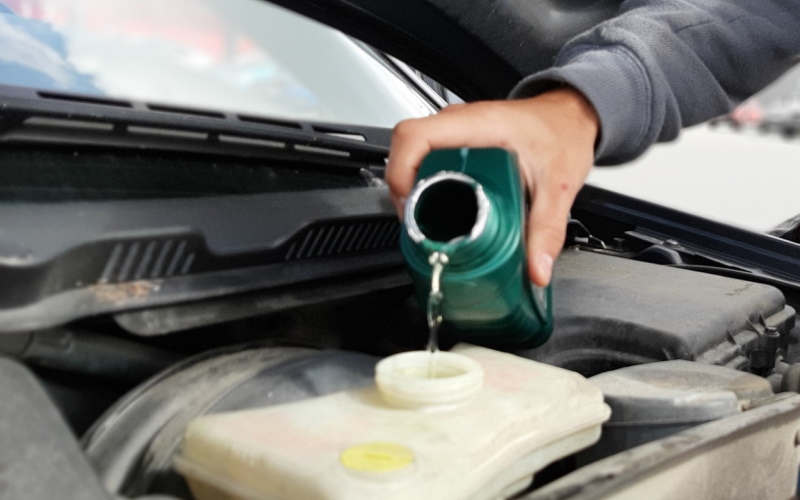Keeping your vehicle topped up with the right fluids will extend its life and keep it operating correctly and running smoothly.
Oil:
Arguably the most important fluid in your vehicle, oil keeps the different parts of your engine lubricated. This prevents engine components from rubbing against each other, creating friction and excess heat. Oil also helps clean you engine by capturing engine contaminants and delivering them to the oil filter for removal.
If left unchanged, oil can become ineffective at removing contaminants, causing expensive damage to your engine over time. When getting your oil changed, we recommend that you change your oil filter as well. This will allow your engine to effectively clean itself.
Transmission fluid:
One of the roles of transmission fluid is to keep your transmission system lubricated. The transmission fluid compartment can be located by looking for your engine’s other dipstick (not the engine oil one). Use this to check the quality of your fluid. If the transmission fluid is not a light red colour but has small particles in it and looks more dark red / brown, this generally means it is due for replacement.
Not replacing your transmission fluid can cause expensive damage to your transmission system over time.
Power steering fluid:
Replacing your power steering fluid will ensure that you are able to smoothly control your car. Power steering fluid provides the hydraulic force needed for steering and also lubricates your steering system, resulting in smoother steering control. Most cars have a transparent power steering fluid reservoir. Use this to check the level of your fluid, topping it up if necessary.
Brake fluid:
The role of brake fluid is to ensure your car can stop when it needs to. Brake fluid works by transferring the force of braking into pressure, causing your vehicle to stop. Over time, the boiling point of brake fluid becomes lower, resulting in a loss of effectiveness. This is because liquid cannot expand under pressure but gas can.
Getting your brake fluid serviced will improve vehicle safety by allowing your vehicle to stop when it needs to.
Radiator fluid/coolant:
Radiator fluid (or coolant) stops your engine from overheating. If your car’s temperature gauge begins rising, this may be a sign that either your vehicle is low on coolant or your radiator is damaged. Overheating can cause serious damage to your engine. Therefore, it is best to pull over and stop driving if your vehicle reaches a high temperature level.
Your coolant tank should be located under the hood / bonnet towards the front of your car, near the radiator. There should be lines on the tank that indicate the maximum and minimum recommended amounts of coolant. If there is not enough, top it up to a healthy level. After a few days of use, check the tank again. If the coolant level has gone down, there may be a different problem such as a leak in your cooling system. For maximum accuracy, check your coolant levels when your vehicle is cold and on a level surface.
Learn more about checking your cooling system here.
Wiper fluid
Topping up your windscreen wiper fluid will make it much easier for you to see while you are driving in rainy weather. Look for a small tank under your hood / bonnet labelled “wipers” or “washer”. Top up when necessary to greatly improve the effectiveness of your windscreen wipers, improving the safety of your vehicle in rainy weather.

